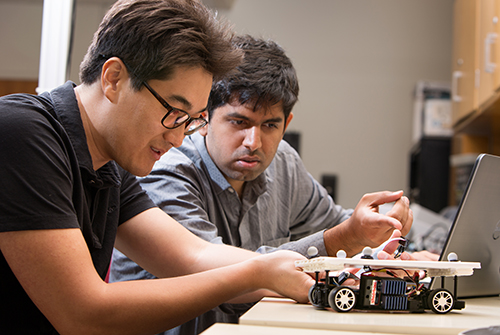 Protecting Autonomous Vehicles
Protecting Autonomous Vehicles
Researchers worldwide are investigating the challenges of making automated transportation safe and secure for a technology-driven future. Among them are Dr. P.R. Kumar, distinguished professor of electrical and computer engineering, and a team of Texas A&M graduate students.
Autonomous vehicles use sensors to gather data about the environment, which is transmitted through the internet to the vehicle’s controls and actuators, such as the brakes and steering wheel. The vehicle then uses these measurements to know when and how much to turn, determine whether it needs to slow down or stop, or make other adjustments.
“While highly sophisticated, these technologies are subject to vulnerabilities,” said Kumar. “If the sensors are defective or hijacked, they can transmit false information on vehicle speed, location or proximity to other objects, causing collisions.”
To enhance security, the team developed a safeguard known as dynamic watermarking. The process involves adding a random watermark to data transmissions and ensuring the presence of this watermark is known to every node in the system. If the data reported by the vehicle’s sensors does not contain the proper watermark, the actuators deduce that the sensors or their data have been tampered with. When this happens, the vehicles respond accordingly, such as halting to avoid collisions.